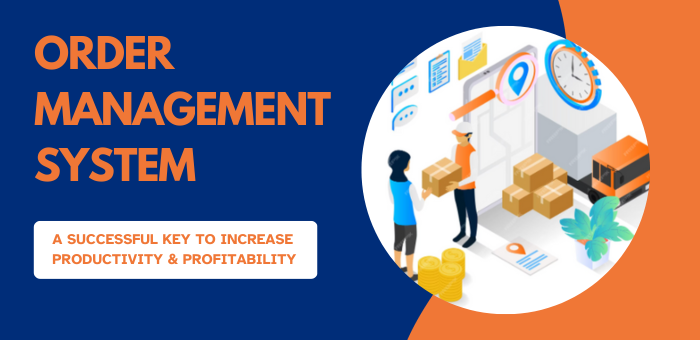10 Ways to Overcome Challenges of Supply Chain Management Industry
Did you know that supply chain management is a critical component of modern business operations? Supply chain management comprises effective planning, sourcing, production, and distribution of goods and services. However, supply chain management industries are facing many challenges that can disrupt business operations, raise production costs, and impact customer satisfaction.
Before serious difficulties arise, 22% of businesses make sure their end users can quickly manage changes in supply and demand. The latest report by Kbvresearch, the supply chain market’s highest CAGR – 12.4% is expected from the worldwide logistics automation market by the end of 2026.
Challenges of Supply Chain Management Industry-
- There’s the issue of supply chain visibility, as many organizations struggle to gain real-time insight into the movement of goods, leading to inefficiencies and disruptions.
- Globalization has introduced complexities related to international trade regulations, tariffs, and geopolitical uncertainties.
- The growing emphasis on sustainability requires organizations to adopt eco-friendly practices, impacting supply chain strategies.
- The rapid advancement of technology brings both opportunities and challenges, as organizations must invest in digital solutions and cybersecurity to remain competitive.
- Consumer demands for faster delivery and personalized experiences place added pressure on supply chains.
Navigating these challenges requires a strategic and adaptive approach in the dynamic field of supply chain management. To thrive in this dynamic landscape, organizations must adopt innovative strategies to overcome these challenges.
Let’s delve into top ways OMS can overcome the challenges of supply chain management
(1) Use OMS Equipped With Technology Advancements:
With the digital transformation growing in every business domain, technology product such as Order Management System could be very helpful in addressing supply chain management challenges. It is depicted that 45.1% of businesses see automation as a vital component in the supply chain management sector. Businesses can make use of the latest technologies including Internet of Things, blockchain, cloud computing and artificial intelligence to bring automation and improve visibility in their supply chains.
For example – Using blockchain technology, businesses can be benefited with a transparent and immutable ledger for tracking products from the source to the end customer. This ensures authenticity as well as reduces the risk of counterfeits. With the help of IoT sensors, supply chain industries can monitor the condition of goods in transit, enabling timely interventions and reducing spoilage. AI-powered predictive analytics assists optimizing inventory management, demand forecasting, and route planning. This ultimately reduces costs and improves efficiency.
(2) Enhancing Supply Chain Visibility:
One of the significant challenges in supply chain management is the lack of real-time visibility into the movement of goods and information. 7% of businesses with an active supply chain network were found to be very susceptible during the Covid-19 pandemic. Organizations can overcome this challenge by implementing advanced supply chain visibility solutions.
These solutions provide a comprehensive view of the entire supply chain, enabling organizations to monitor inventory levels, track shipments, and anticipate disruptions. Improved visibility empowers organizations to make data-driven decisions, respond quickly to changing conditions, and enhance customer satisfaction by providing accurate delivery estimates.
(3) Implementing Sustainable Practices:
Sustainability has become a central concern in supply chain management. Rising environmental awareness, regulatory pressures, and consumer preferences for eco-friendly products have pushed organizations to adopt sustainable practices. To address this challenge, companies should integrate sustainability into their supply chain strategies.
This may involve sourcing materials from renewable sources, reducing carbon emissions in transportation, and minimizing waste through recycling and responsible disposal. By embracing sustainability, organizations can not only mitigate risks but also appeal to environmentally conscious consumers and enhance their brand reputation.
(4) Building Resilient Supply Chains:
2% of merchants experienced significant global interruptions in their supply chains during the COVID-19 crisis. Supply chain disruptions, whether caused by natural disasters, geopolitical tensions, or unforeseen events like the COVID-19 can have a significant impact on operations.
To build resilient supply chains, organizations must diversify their supplier base, maintain safety stock, and create contingency plans. Resilience also involves developing agile supply chain strategies that can quickly adapt to changes in demand and supply. By proactively addressing vulnerabilities and building flexibility into their supply chains, organizations can minimize the impact of disruptions and ensure business continuity.
(5) Collaboration All Through the Supply Chain:
Collaboration is a key to success in the supply chain industry. of success in supply chain management. Organizations should collaborate closely with suppliers, distributors, and other stakeholders to improve efficiency, reduce costs, and enhance overall supply chain performance.
Collaborative initiatives can include sharing demand forecasts, coordinating production schedules, and jointly investing in technology solutions. Establishing strong relationships and open communication channels across the supply chain can foster trust and lead to mutual benefits.
(6) Employing Demand Forecasting & Inventory Optimization:
Accurate demand forecasting is crucial for minimizing inventory carrying costs while ensuring product availability. Leveraging advanced analytics and historical data, organizations can develop more precise demand forecasts. Additionally, implementing inventory optimization tools can help strike the right balance between holding sufficient inventory to meet demand and avoiding excess stock. Reducing carrying costs and avoiding stock outs not only improves efficiency but also frees up capital for other investments.
(7) Implementing Lean Principles:
Lean principles focus on eliminating waste and inefficiencies from the supply chain. Organizations can apply lean techniques to streamline processes, reduce lead times, and cut costs. Techniques like Just-In-Time (JIT) inventory management and Value Stream Mapping (VSM) can help identify and eliminate bottlenecks.
Lean principles also emphasize continuous improvement, encouraging organizations to regularly review and refine their supply chain processes for maximum efficiency.
(8) Investing in Employee Training & Development:
More than 30% of businesses struggle to find enough resources to meet demand. 94% of companies use supply chain alliances to control peak season spikes. This clears that a skilled and passionate workforce is essential for supply chain management. An empowered and knowledgeable workforce can contribute significantly to overcoming supply chain challenges.
Companies should invest in appropriate supply chain training and development programs that help them build skills needed in their staff to manage supply chain operations and be brilliant in their roles. This training includes learning on how to utilize supply chain technologies, knowing what are the best practices in inventory management and crisis response procedures.
(9) Optimizing Transportation & Logistics:
Transportation costs often represent a significant portion of supply chain expenses. To overcome this challenge, organizations should optimize their transportation and logistics operations. This may involve using route optimization software to minimize fuel consumption and reduce transportation costs.
Collaborative shipping arrangements with other organizations can also help achieve economies of scale and reduce shipping expenses. Additionally, exploring alternative transportation methods, such as rail or intermodal shipping, can provide cost savings and reduce environmental impact.
(10) Monitoring Key Performance Indicators (KPIs):
Effective supply chain management requires continuous monitoring and evaluation of key performance indicators (KPIs). Organizations should identify and track relevant KPIs such as on-time delivery, inventory turnover, and order accuracy.
By monitoring these metrics on a regular interval, organizations can detect which areas need improvement and also, make data-driven decisions. This enhances supply chain performance and customer experience. With the help of advanced analytics and dashboards, organizations can get real-time insights into supply chain operations. This enables proactive responses to emerging challenges.
Summing Up
There are plenty of challenges in the supply chain management sector. However, by adopting the right strategies and leveraging technology, organizations can overcome these challenges and achieve more efficiency in their supply chain.
If you are looking for a leading IT business that can help you manage supply chain management operations ensuring that your organizations remain agile and adaptable in the face of evolving market dynamics, you should consult Meridian Technology Solutions.
We’re experts in supply chain management operations.
Let’s talk.




